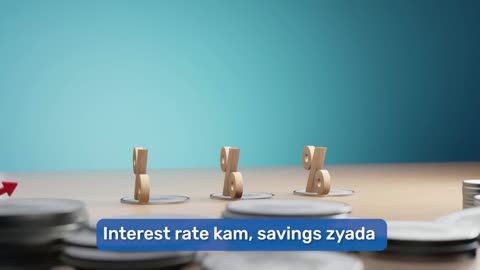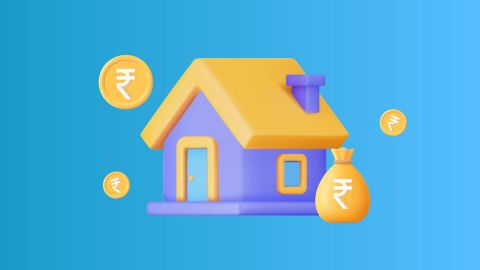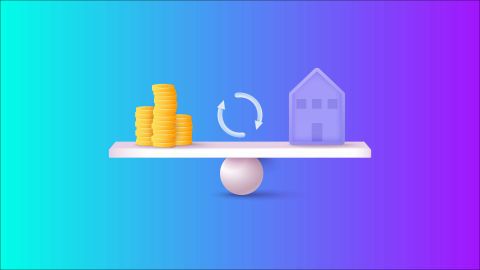The Employees’ Provident Fund (EPF) is a long-term savings scheme designed to provide financial security after retirement. Both the employee and employer contribute a portion of the salary towards this fund monthly. In certain cases, the government may also contribute. The EPF is regulated by the Employees’ Provident Fund Organisation (EPFO), a statutory body under the Ministry of Labour and Employment.
The corpus collected over the years earns interest and can be withdrawn entirely on retirement. However, you may also access a portion of it during your employment for specific purposes, such as medical emergencies, home purchase or construction, loan repayment, or marriage. Each scenario has defined rules and eligibility criteria, including the number of years of service and withdrawal limits. In this blog, we explain the updated rules for 2025, conditions for withdrawal, applicable limits, required documents, procedures, and tax implications. If you're considering using your PF for a home loan, this guide will help you understand how to do it correctly while avoiding rejection of your claim.
Instructions and guidelines for the advances to be claimed through Form 31
Purpose of advance |
Eligibility and service requirement |
Amount you can withdraw |
Frequency / limits |
Payment details and documents needed |
Buying or constructing a house (including buying land) |
Minimum 5 years of PF membership. Property should be in your name, your spouse’s name, or jointly. |
For land: up to 24 months of basic wages + DA. For house/flat: up to 36 months of basic wages + DA, or full PF balance (employee + employer share with interest), or the actual cost – whichever is least. |
One withdrawal allowed. Payment may be in one or more instalments for construction. |
Paid directly to the housing agency, promoter, or individual seller. Member’s declaration form is required. |
Improvements or alterations to an existing house |
Allowed after 5 years from the completion of the house, provided it is owned by you, your spouse, or jointly. |
Up to 12 months of basic wages + DA, or employee’s share with interest, or the cost of work – whichever is lower. |
Only once. |
Paid to the member. Declaration form required. |
Repairs to an existing house |
Allowed 10 years after the last withdrawal made for house improvements. |
Up to 12 months of basic wages + DA, or employee’s share with interest, or cost of repair – whichever is lower. |
Only once. |
Paid to the member. Declaration form required. |
Repaying a housing loan |
Must have completed at least 10 years of membership. Loan should have been taken for purposes allowed under Para 68B. |
Up to 36 months of basic wages + DA, or full PF balance with interest, or total outstanding loan amount – whichever is less. |
Only once. |
Paid directly to the lender, e.g. housing board, bank, housing finance company. Certificate from the lender is mandatory. |
When employer faces closure/lockout |
Establishment closed for more than 15 days and employees unpaid, or wages not received for over 2 months (other than during strike). |
Member’s share with interest, up to the amount required. |
Can be taken more than once depending on circumstances. |
Paid to member. Employer certificate needed (Form A/B). |
Dismissal, retrenchment, or legal dispute over termination |
Applicable when a case has been filed in court by the member. |
Up to 50% of employee’s share with interest. |
Can be availed more than once. |
Member needs to provide copy of court petition and a certificate confirming case status. |
Medical treatment for self or family |
For serious illness requiring hospitalisation. |
Up to 6 months of basic wages + DA, or employee’s share with interest – whichever is less. |
Once per case. |
Certificate from employer and doctor is required. |
Marriage or higher education of children |
For marriage of self, child, or sibling; or for post-matriculation education of son/daughter. Minimum 7 years of membership. |
Up to 50% of employee’s share with interest. |
Marriage: max 3 times. Education: as required. |
For marriage, declaration form; for education, certificate from head of institution with estimated expenses. |
Support for physically challenged members |
For purchase of equipment to reduce hardship due to disability. |
Up to 6 months of basic wages + DA, or employee’s share with interest, or actual equipment cost – whichever is least. |
Once, and no second advance within 3 years. |
Certificate from a doctor (Form F). |
Withdrawal before retirement |
After 54 years of age, within one year before retirement/superannuation (whichever is later). |
Up to 90% of PF balance. |
One time. |
Paid directly to member. |
Other special cases |
Includes natural disasters (damage to property), electricity cuts, or investment in specific pension schemes. |
Amount depends on the case (e.g. up to Rs. 300 for electricity cut). |
As per rules. |
Relevant supporting documents required. |
Latest updates on PF withdrawal rules for home loan in 2025
The EPF interest rate for the 2024–25 financial year has been set at 8.25%.
- The limit for auto-approved advances for medical needs under Para 68J has been raised to Rs. 1 lakh, allowing quicker claim settlements.
- The EPFO has reduced the number of verification steps from 27 to 18 and plans to bring it down to 16 in the future.
- By June 2025, EPF withdrawals may be possible through UPI and ATMs.
- If your UAN is Aadhaar-verified with full KYC, you will not need your employer’s approval for online PF claims and transfers.
- Aadhaar-linked UAN holders can update details like name, birth date, gender, and marital status online without needing employer approval. However, complex corrections might still need EPFO help.
- EPFO has dropped the requirement for uploading cheque images or attested bank passbooks in some cases where Aadhaar and bank KYC are verified. Cancelled cheques are no longer needed in such scenarios.
- EPFO has partnered with 15 more banks—both private and public—bringing the total to 32, to simplify contributions from employers under the EPFO Act.
- Withdrawals for property-related purposes require at least 5 years of service.
- TDS is applicable on withdrawals above Rs. 50,000 made before completing 5 years of continuous service.
Types of PF withdrawals: Partial vs. full
1. Complete withdrawal
You are allowed to withdraw the entire balance of your EPF under the following circumstances:
After retirement, once you reach the age of 58 years.
If you have remained unemployed for at least 2 consecutive months.
In the unfortunate event of your death before the retirement age—your nominee or legal heir can claim the full amount.
2. Partial withdrawal
You can withdraw a portion of your EPF savings only under specific conditions, and limits vary depending on the purpose. Partial withdrawals are permitted for:
Medical treatment of self or family
Purchasing or constructing a home
Renovating an existing house
Repaying a home loan
Funding marriage expenses
Paying for education
Each of these situations has its own withdrawal rules, required documentation, and maximum limits you can claim. Make sure to check the current EPFO guidelines before initiating your claim.
Conditions when partial EPF withdrawal is allowed
Withdrawal purpose |
Minimum years required in service |
Withdrawal limit |
Other criteria |
Medical |
No criteria |
Lower of the two:
|
You can withdraw funds for medical treatment for yourself, your parents, your children, or your spouse. |
Marriage |
7 years |
Maximum 50% of your total share in EPF contribution
|
You can withdraw funds for yourself, your children, or your siblings' marriage. |
Education |
7 years |
Maximum 50% of your total share in EPF contribution |
You can withdraw for your education or your child's post-matriculation education. |
Land purchase or house construction |
5 years |
For house
For land
The sum is restricted to the total property cost. |
|
Home loan repayment |
10 years |
Lower of the three:
|
|
House renovation |
5 years |
Lower of the three:
|
You can opt for this facility twice:
|
Before retirement |
Once you are 58 years of age and the withdrawal is one year before the superannuation or retirement |
90% of the corpus, including interest |
|
Importance of PF withdrawal for home loan repayment
Utilising PF funds for home loan repayment serves as a financial aid for many aspiring homeowners. It provides individuals with the financial flexibility needed to bridge the gap between their savings and the cost of purchasing a home. Additionally, PF withdrawal for home loan repayment enables individuals to reduce their debt burden and accelerate the process of owning their home.
Purpose of PF withdrawal for home loan
The purpose of PF withdrawal for home loan is to provide individuals with financial assistance in purchasing or constructing a residential property. This withdrawal option serves as a significant resource for those seeking to fulfil their homeownership aspirations. By allowing individuals to utilise their Provident Fund (PF) savings, it helps bridge the financial gap between their existing resources and the costs associated with buying a home.
Key purposes of PF withdrawal for home loan include:
- Down payment: PF withdrawal can be used to cover the down payment or initial deposit required when purchasing a home. This reduces the burden of arranging a substantial lump sum amount upfront.
While PF withdrawal can help with your down payment, combining it with a Bajaj Housing Finance Home Loan can make your dream home even more affordable. Check your eligibility today. You may already qualify for competitive interest rates, find out by entering your mobile number and OTP. - Loan repayment: Individuals can utilise PF funds to repay an existing home loan. This option helps in reducing the outstanding loan amount, thereby decreasing the overall debt burden and accelerating the loan repayment process.
- Meeting additional expenses: Apart from the core cost of the property, there are various additional expenses associated with home buying, such as registration fees, stamp duty, legal charges, and brokerage fees. PF withdrawal can assist in covering these ancillary expenses.
- Construction or renovation: PF funds can also be used for constructing or renovating a residential property. This option is beneficial for individuals planning to build their own home or undertake significant renovation work.
- Addressing urgent housing needs: In cases where individuals face urgent housing needs due to factors such as relocation or family expansion, PF withdrawal provides a timely financial solution to secure housing accommodations.
Overall, the purpose of PF withdrawal for home loan is to empower individuals in realising their dream of homeownership by providing them with access to their PF savings when needed most. It offers a practical and viable option for funding various aspects of the home buying process, making homeownership more achievable and accessible for individuals across different income brackets.
Conditions for PF withdrawal for buying a plot or land
To withdraw PF for purchasing a plot, you must have at least 5 years of continuous contributions to your EPF account. The maximum amount you can withdraw is capped at your basic salary for 24 months, plus your dearness allowance (DA). However, the withdrawn amount must not exceed the actual cost of the plot you are planning to purchase. This withdrawal is allowed only once during your entire service period. Also, the land must be registered in your name or jointly with your spouse to qualify for this benefit under EPFO rules.
Conditions for PF withdrawal for buying or constructing a house
If you want to withdraw PF funds to buy or construct a house, you must have completed at least 5 years of service. The maximum amount you can claim is up to 36 times your basic salary and dearness allowance. However, this is also subject to the total cost of the property.
Here are some key conditions to note:
The property must be registered in your name or jointly with your spouse.
If you're purchasing a house jointly, your spouse must be the co-owner.
The transaction to purchase the property must be completed within six months from the withdrawal date.
If the funds are for construction:
The construction must begin within six months of withdrawal.
The house must be completed within 12 months from the date of the last withdrawal instalment.
Important Points to Consider:
Withdrawing PF for a home loan down payment might affect your retirement savings.
If your EPF is generating good interest, you may consider using fixed deposits or savings instead.
Ensure you are aware of tax implications when withdrawing funds for home-related expenses.
It’s important to weigh all financial options before making a final decision.




